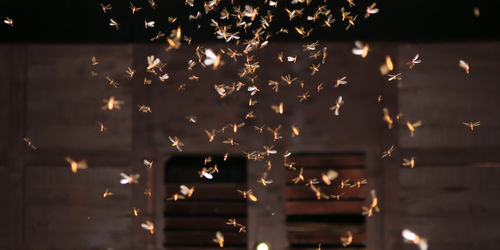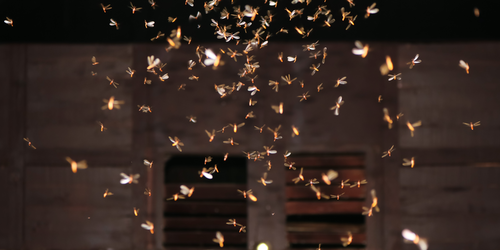Follow the Crowd to Find a Smell
Moths can track down smells, such as the scent released by a potential mate. This activity is usually an individual behavior. But Antonio Celani of the Abdus Salam International Centre for Theoretical Physics in Italy and colleagues, who study animal behavior, wondered if the collective behavior of swarming might let moth-like agents search more efficiently. Modeling a swarm of fictitious organisms that track smells like moths do and that flock like birds, they found that the organisms could effectively locate an odor-emitting object in a realistic turbulent environment, like air, when they trusted their neighbors’ noses over their own.
Following a smell through turbulent air can be challenging, as odor particles come in disparate bursts from various directions. This issue causes moths to take indirect, zigzagging paths to their destinations, as they track smells, in part, by heading upwind of the most recent smell puff they encountered. Celani and colleagues wondered if swarms might be better smell-seekers than individuals, since multiple organisms could track the odor. For that, individuals would need to “trust” their neighbors and follow them some of the time.
To test this idea, the researchers modeled organisms that followed both their own noses and their neighbors’ flight patterns. Varying the degree to which each individual trusted the others, they found that the swarm most efficiently located a source when individuals trusted their neighbors’ senses over their own about 80% of the time. The researchers note that the finding likely won’t provide insights into how real animals locate smelly objects, since the modeled organisms are fictitious. They do, however, anticipate that their model could inspire designs for robots that sniff out bombs or that detect toxic gas leaks.
This research is published in Physical Review E.
–Erika K. Carlson
Erika K. Carlson is a Corresponding Editor for Physics based in New York City.





